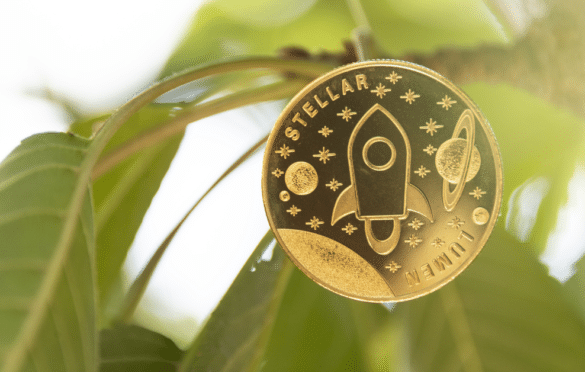Stellar is an open-source currency and payment network. It allows individuals to create, send and trade digital forms of money, for example, dollars, pesos, bitcoin, and many more. It is built so that all monetary networks can work together under the same roof.
Who runs it?
The public owns Stellar with no single owner. Millions of transactions are made daily by this decentralized open network. Like Bitcoin and Ethereum, it relies on blockchain to keep the network in sync. It is a more efficient, cheaper, energy-efficient blockchain system.
The Stellar Development Foundation (SDF) develops and promotes the Stellar network. The SDF is a non-profit organization in San Francisco, CA, founded in 2014 by Jed McCaleb, also a co-founder of Ripple. The SDF aims to promote global financial access, literacy, and inclusion by developing the Stellar network, an open-source, decentralized platform for exchanging digital assets and currencies. The SDF is funded by donations, including a portion of the initial Lumens (XLM) supply generated at the network launch.
What is it for?

The Stellar network launched in 2014 has handled about 450 operations. An average of about 4 million individuals have used Stellar. Companies and small start-ups have used it to transfer money and access new markets. It has always been cryptocurrency-adjacent, but the program is here to complement rather than disrupt the existing financial system. Whereas the Bitcoin network, for example, is specifically for trading bitcoins. It is a decentralized system that can trade any type of currency transparently and efficiently.
The native digital currency used on the network is Lumen. It doesn’t require the use of any specific currency. Instead, its purpose is to use traditional money that people have been using to spend and save for quite some time and make it valuable and accessible.
One of the things done with Stellar is creating a digital representation of the U.S. dollar. On Stellar, this would be a “dollar token”. When someone returns the dollar token, you promise to redeem it in exchange for the regular dollar. You set up a 1:1 relationship between the digital token and the dollar. Every token is the equivalent worth of the dollar; therefore, people holding it can treat it like traditional money.
Who builds on Stellar?

Stellar is a fast and efficient network for trading, saving, and spending digital money for end-users. It’s an open financial infrastructure for developers. Everybody has access; no permission or application is necessary. Currency tokens such as euros, bitcoins, dollars, Mexican pesos, Brazilian reais, Nigerian Naira, and Argentinian pesos are all accessible and ready to use on the network. The issuers must deal with the deposit and compliance, and the builders focus on the end-user experience. The same applies to the token layer. Any financial institution can come out with a new digital token to fill the needs of a certain market. In this way, the power grows with each unique company and developer.
In addition to financial institutions, other entities are built on the network. These include startups, non-profit organizations, and even government agencies. One example of a startup building on Stellar is Cowrie Integrated Systems. This Nigerian fintech company is leveraging the Stellar network to create a low-cost, cross-border payment solution for African migrants. Another startup is SatoshiPay, a European micropayment platform that uses Stellar to enable instant, feeless transactions.
Non-profit organizations such as GiveDirectly and the Akoin Foundation also use the network to facilitate charitable donations and financial inclusion in emerging markets. Furthermore, some government agencies are exploring Stellar for their own digital currency initiatives. For instance, the Ukraine government has partnered with the Stellar Development Foundation to create a digital version of its national currency, the hryvnia.
How does it work?
Using a ledger, Stellar is a system that can track ownership. However, there is no real accountant in this scenario; rather, there is a network of independent computers that review the work of others. As we mentioned before, it is a system with no central authority. Therefore, no one can stop its functionality.
An algorithm called the Stellar Consensus Protocol (SCP) keeps the system in sync. To agree on a decentralized system, the most famous method is the proof of work method. SCP shows its success by being a fast and highly energy-efficient network
What are its Unique Features?
The Stellar network has several unique features. Let’s dive into the 6 features we view as the most important:
- Fast transaction process – The Stellar Consensus Protocol (SCP) allows for quick and efficient transaction processing using a unique quorum slice-based approach. This will enable nodes to reach consensus quickly and prevents the network from being held up by slow nodes.
- Low transaction fees – The transaction fees on the network are relatively low, typically ranging from 0.00001 to 0.0001 XLM (Stellar’s native cryptocurrency) per transaction, making Stellar an affordable option for small transactions. It also helps to promote financial inclusion by lowering the barriers to entry for people who may not have access to traditional banking.
- Decentralized exchange – The network has a built-in decentralized exchange enabling users to trade various digital assets, such as cryptocurrencies and fiat currencies. This exchange is powered by a combination of Stellar’s native currency, XLM, and other stablecoins and is highly secured and transparent.
- Multicurrency support – It supports numerous currencies, including fiat currencies, cryptocurrencies, and commodities, including gold and silver. This allows for easy cross-border transactions without expensive currency conversions or intermediaries.
- Smart contracts – Stellar supports the creation of smart contracts, which are self-executing contracts. Smart contracts can automate the exchange of assets or the performance of specific actions. They can be used for escrow services, fundraising, or decentralized autonomous organizations (DAOs).
- Built-in token creation – Stellar makes it simple for users to create their tokens on the network, which can be beneficial for several purposes, such as loyalty points, fundraising, or asset tracking. This feature makes it easy for businesses or organizations to create customized digital assets without the need for complex technical expertise or expensive development costs.
Where is Stellar going?

Simply put, it enables a future where ordinary people may transmit money anywhere for a reasonable price and promptly. The Stellar Development Foundation believes that the true power of the modern digital economy is only when currency can travel freely around the world. Moreover, Stellar’s commitment to interoperability and open standards makes it seamless to integrate with other blockchain networks and traditional financial systems, creating a more interconnected global financial infrastructure. This can unlock new opportunities for cross-border collaboration, trade, and investment, ultimately driving greater economic growth and prosperity for all.
Their primary mission is to provide affordable and accessible financial services to people worldwide, specifically those underserved by traditional banking systems. They aim to achieve this by providing fast, low-cost, secure cross-border transactions and enabling the creation of new financial products and services on the network.
To develop its reach and capabilities, they have partnered with various organizations, including banks, payment processors, and blockchain projects. For example, they have partnered with IBM to develop blockchain-based payment solutions for cross-border transactions. It has also collaborated with various providers to offer low-cost remittance services to underserved communities.
Stellar continues to innovate and develop new features and capabilities for its network, such as the recent introduction of Stellar-based NFTs (non-fungible tokens) and the integration of the Lightning Network for faster and more efficient transactions. Stellar also continues to improve its consensus protocol and enhance its network’s security and efficiency.
Overall, Stellar continues pursuing its mission of promoting financial inclusion and expanding access to affordable and accessible financial services worldwide while partnering with other organizations and continuing to innovate and develop its network.
Conclusion
In conclusion, Stellar is a powerful blockchain network enabling fast, low-cost, secure cross-border transactions and digital asset exchanges. Its unique features include fast transaction processing, low transaction fees, decentralized exchange, multicurrency support, smart contracts, and built-in token creation. Stellar is well-positioned to promote financial inclusion and expand access to affordable and accessible financial services worldwide. Stellar is working towards its goal by partnering with other organizations, innovating and developing new solutions and features, promoting sustainability and reducing its environmental impact. The goal is to enable the currency to travel freely around the world and unlock the true potential of the modern digital economy.
Stellar’s network has gained significant attention recently, with many organizations adopting and integrating its technology into their products and services. The network’s low transaction fees and fast processing times make it an excellent option for businesses and individuals alike, and its focus on financial inclusion has helped to bring affordable and accessible financial services to communities around the world. As the digital economy continues to evolve, Stellar is in a good place to play a leading role in shaping the future of finance and enabling the free movement of currency worldwide.
For more news updates, visit our homepage now and see our latest news article. Want to learn more about trading? Visit our education page now and learn for FREE!
Interested in reading more? What is a DApp?

